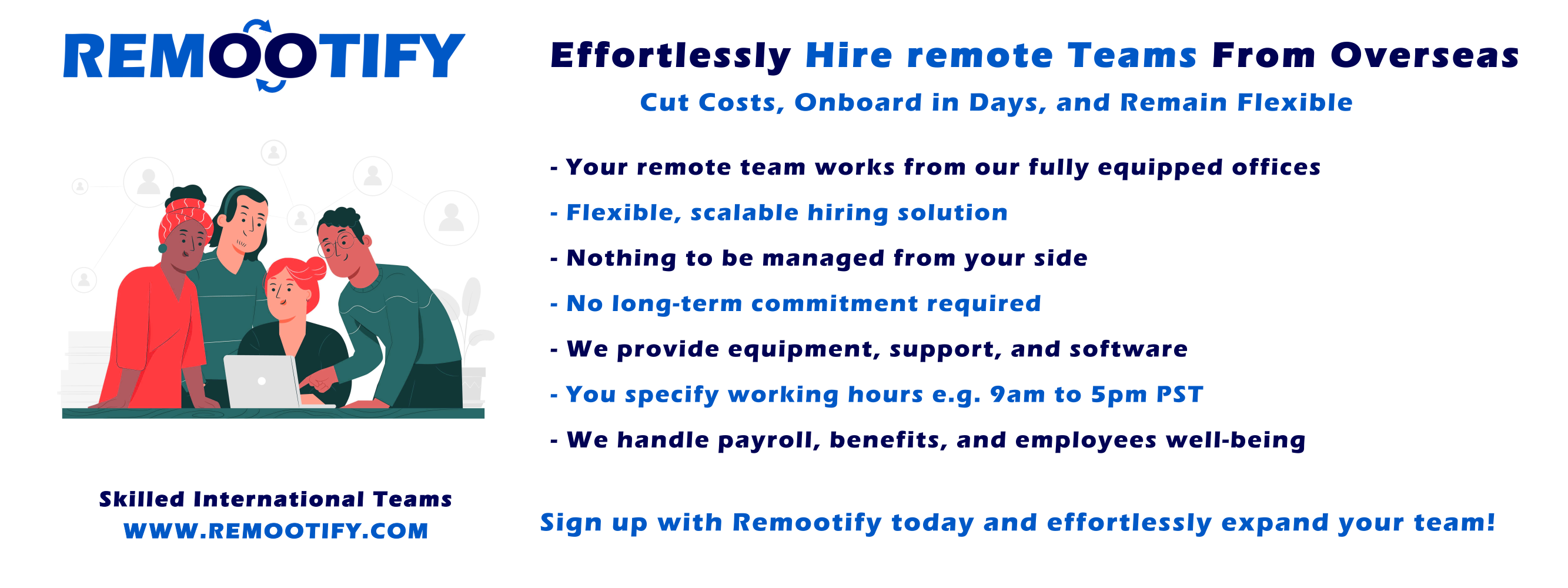Start hiring YOUR REMOTE TEAM, Today!
Enter your information below to start a discussion with one of our team members!

Moving into foreign markets may seem daunting, but creating a wholly owned subsidiary can be an effective strategy. Did you know that these subsidiaries allow companies to offset profits with losses on their taxes? This blog will delve into both the advantages and disadvantages of having a wholly owned subsidiary for your business.
Excited to know more? Let’s dive in!
Key Takeaways
- Wholly owned subsidiaries offer financial advantages by allowing companies to offset profits with losses, lowering tax liability and providing full control over financial management.
- Operational advantages include complete control over business operations, improved efficiency through better management control, and flexibility in adapting to local markets.
- Strategic advantages of wholly owned subsidiaries include complete ownership and decision-making control, risk reduction through diversification into new markets, and efficient decision making based on market conditions.
- Disadvantages include increased financial risk due to higher tax burdens and costs, limited operational flexibility requiring careful assessment of capabilities and resources, and the potential for misallocation of resources or overvaluation.
What is a Wholly Owned Subsidiary?
A wholly owned subsidiary is a company that the parent company owns all of. That means no other firm has a say in it. This kind of set up gives the parent company full control over the subsidiary.
It gets to make all decisions about how to run it without needing input from others.
This total control also shields the parent company from many risks. If anything goes wrong with the subsidiary, only it will get hit, not its owner. So, a wholly owned subsidiary can protect its parent when things go south or if there are legal problems at hand.
Both small businesses and big firms use this method as part of their growth plans.
Advantages of a Wholly Owned Subsidiary
Wholly owned subsidiaries offer financial, operational, and strategic advantages to parent companies.
Financial advantages
Wholly owned subsidiaries offer several financial advantages to companies. One benefit is the ability to offset profits and losses within different subsidiaries, which can lower tax liability for the parent company.
This means that if one subsidiary generates high profits, it can help balance out another subsidiary’s losses, resulting in overall reduced taxes. Additionally, establishing a wholly owned subsidiary allows the parent company to have full control over financial management and decision making.
This direct control ensures that resources are allocated efficiently and enables timely decision-making based on the parent company’s financial goals and strategies. Wholly owned subsidiaries also provide limited liability protection for the parent company, ensuring that its overall financial risk is minimized when operating in foreign markets or expanding internationally.
Operational advantages
Operational advantages refer to the benefits that a company gains by establishing a wholly owned subsidiary. One operational advantage is having complete control over business operations and decision-making processes.
The parent company can ensure that the subsidiary follows its strategic direction and aligns with its goals. This allows for timely decision-making, efficient coordination, and effective implementation of strategies.
Another advantage is improved operational efficiency. Wholly owned subsidiaries provide better management control, allowing the parent company to streamline processes, standardize procedures, and optimize resource allocation.
This results in increased productivity and reduced costs. Additionally, setting up a wholly owned subsidiary allows for greater flexibility in terms of customization and adaptation to local markets.
Strategic advantages
Wholly owned subsidiaries offer several strategic advantages for businesses. One of the main benefits is that the parent company has complete control and ownership over the subsidiary.
This allows the parent company to make strategic decisions without having to consult with other partners or shareholders. Additionally, establishing wholly owned subsidiaries can help companies reduce their risk by diversifying their operations and expanding into new markets.
By having multiple subsidiaries in different regions, companies can mitigate any potential risks associated with a single market or region. Furthermore, wholly owned subsidiaries allow for more efficient and timely decision making as there are no additional layers of management or decision-making processes involved.
Disadvantages of a Wholly Owned Subsidiary
Wholly owned subsidiaries can come with disadvantages such as increased financial risk, limited operational flexibility, and a lack of local expertise. Read on to learn more about these potential drawbacks.
Financial disadvantages
One of the financial disadvantages of having a wholly owned subsidiary is the increased tax burden on the parent company. With a wholly owned subsidiary, the parent company is responsible for all taxes and expenses related to its operations.
This can result in higher tax payments compared to other business structures. Additionally, setting up and maintaining a wholly owned subsidiary involves significant financial investment from the parent company.
Costs include not only initial capital expenditures but also ongoing expenses such as staff costs and financial management fees. These factors can strain the finances of small businesses or companies with limited resources.
– Operational disadvantages
One disadvantage of having a wholly owned subsidiary relates to operational control. While it provides direct control over operations, it also requires the parent company to take full responsibility for day-to-day decision making and management of the subsidiary’s activities.
This can increase workload and put pressure on timely decision-making processes. Moreover, there may be challenges in adapting to local market conditions or complying with regulations in foreign markets where subsidiaries are established.
These operational hurdles can affect efficiency and profitability, making it important for companies considering this structure to carefully assess their capabilities and resources before proceeding with establishing a wholly owned subsidiary.
– Strategic disadvantages
Another potential drawback of having a wholly owned subsidiary is that it entails greater risk than other forms of international expansion options like joint ventures or mergers/acquisitions.
With sole ownership comes sole responsibility for managing risks associated with foreign markets, including currency fluctuations, political instability, and changes in market dynamics.
Furthermore , creating entirely new subsidiaries require substantial strategic decision-making by assessing opportunities based on market presence , customer base , competition , etc.Risks include overvaluation when estimating potential success or underestimating challenges that may arise.
Operational disadvantages
Operational disadvantages of a wholly owned subsidiary include increased costs for the parent company. This can involve expenses related to hiring and managing employees in foreign markets, which may be challenging and time-consuming.
Additionally, setting up and maintaining wholly owned subsidiaries requires complex documentation and legal procedures. There is also a risk of overvaluation, as the parent company might overestimate the potential success of the subsidiary.
Despite these challenges, establishing a wholly owned subsidiary allows for direct control over operations and limited liability protection for the parent company.
Strategic disadvantages
One of the strategic disadvantages of establishing a wholly owned subsidiary is the risk of overvaluation. When a parent company decides to create a subsidiary, there is always the possibility that it may overestimate the potential success or market demand for the new venture.
This can lead to poor decision-making and misallocation of resources, resulting in financial losses for the parent company. Additionally, if the subsidiary fails to achieve its strategic objectives, it can negatively impact the overall reputation and market presence of the parent company.
Therefore, careful evaluation and analysis are crucial when considering whether to establish a wholly owned subsidiary.
Another strategic disadvantage is that creating a wholly owned subsidiary reduces opportunities for collaboration and joint ventures with local partners. By solely owning and controlling all aspects of operations in foreign markets, companies may miss out on valuable insights and expertise from local partners who have deep knowledge of the local business environment.
Collaborating with local partners through joint ventures or alliances can provide access to networks, distribution channels, and market knowledge that would be otherwise difficult to obtain on their own.
When to Create a Wholly Owned Subsidiary
Determine the need for global expansion, identify the potential benefits, and evaluate the long-term risks.
Determine the need for global expansion
Global expansion can be a big step for businesses, so it’s important to evaluate whether it is necessary. One way to determine the need for global expansion is by looking at potential benefits.
For example, expanding globally can lead to increased market presence and access to new customers. It can also provide opportunities for diversification and risk reduction. However, it’s crucial to balance these benefits with the long-term risks involved in global expansion, such as financial investment and tax implications.
By carefully considering these factors, businesses can make informed decisions about whether or not they should pursue global expansion.
Identify the potential benefits
There are several potential benefits of creating a wholly owned subsidiary. One benefit is that it allows businesses to expand their market presence internationally. By establishing a subsidiary in a foreign market, companies can tap into new customer bases and increase their global reach.
Another benefit is the ability to exercise direct control over operations. With full ownership, the parent company has complete authority over decision-making and can ensure that strategic goals are aligned across all subsidiaries.
Additionally, setting up a wholly owned subsidiary provides limited liability protection for the parent company, safeguarding its assets from risks associated with the subsidiary’s operations.
Evaluate the long-term risks
Setting up a wholly owned subsidiary comes with its fair share of long-term risks. One risk is the increased tax burden on the parent company, as it may be required to pay taxes in both the home country and the foreign market.
Another risk is that setting up and maintaining wholly owned subsidiaries involves complex legal procedures and documentation. Additionally, there is a risk of overvaluation, where the parent company may overestimate the success of the subsidiary.
It’s important to carefully evaluate these risks before deciding to create a wholly owned subsidiary.
Conclusion
In conclusion, exploring the advantages and disadvantages of wholly owned subsidiaries is important for companies considering international expansion. While there are financial benefits and direct control over operations, there are also drawbacks such as increased tax burdens and higher costs.
Understanding these factors can help businesses make informed decisions about whether to create a wholly owned subsidiary or explore other options for global growth.
FAQs
1. What is a wholly-owned subsidiary company?
A wholly-owned subsidiary company is a business where all the equity belongs to one parent firm, unlike joint ventures or mergers and acquisition.
2. Are there any tax benefits in owning a foreign-owned subsidiary?
Yes, having a foreign investment and keeping profits overseas can offer positive tax implications for some businesses.
3. What might be an advantage of exploring the wholly owned subsidiary advantages and disadvantages before setting up such a venture?
Knowing these helps firms plan better product lines and minimize potential taxation issues with their foreign investments.
4. Can I start my own product lines under my subsidiary company?
Yes, you can roll out your own product lines through your subsidiary while still protecting your main brand’s equity.





